The historic estate Tasca d ‘Almerita’s new project at Etna, Tenuta Tascante (read it backwards), is a tribute to finesse and elegance. This new project is on the slopes of Etna. Come with us and discover one of Sicily’s most active wine producers and their new project on the Sicilian volcano.
“The challenge is to make wines with elegant tannins but at the same time make wines that can be aged for a long time,” says Alberto Tasca d ‘Almerita in answer to the question which the biggest challenge is in working on Etna.
Etna, one of the world’s most active volcanoes and Europe’s tallest with its 3350 meters, has undergone a wine renaissance over the past fifteen years. Today, it is one of the world’s most interesting wine regions with wines more similar to those from Barolo and Barbaresco than those from hot Sicily. The nerello mascalese grape is the king of grapes with its elegance, light colour, high acidity and wild tannins. The king is sometimes assisted by nerello cappuccio, which could be likened to one of Aretha Franklin’s choral singers, who back up nerello mascalese’s toughness with lower acidity, less tannins and more colour. But not here, all the Tasca d ‘Almerita’s Tenuta Tascante wines from Etna are made from only nerello mascalese.
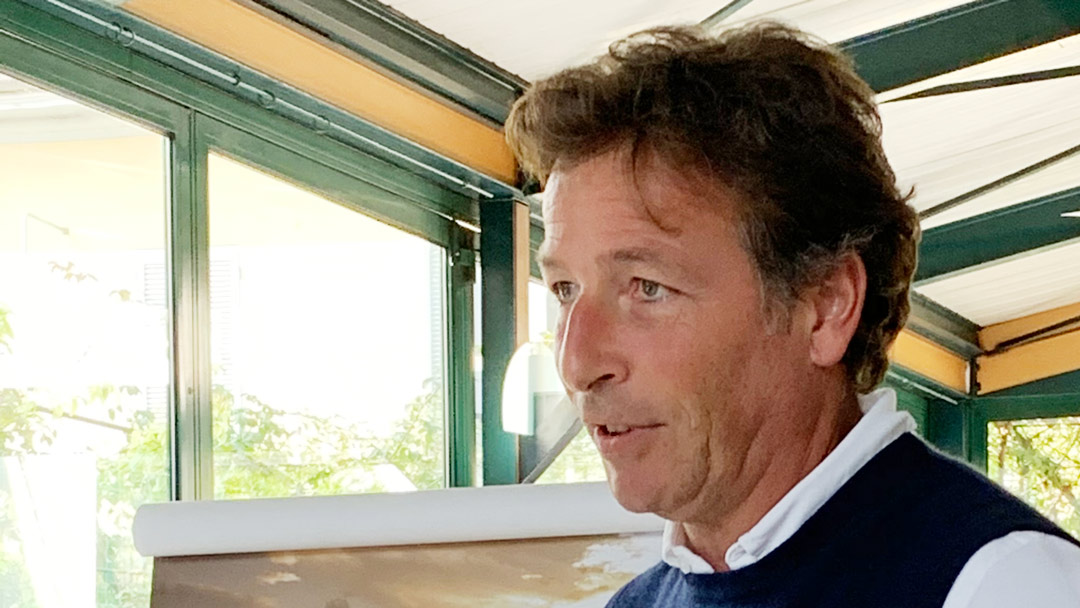
Historic winery with a foot into the future
Tasca d ‘Almerita is a historic farm on Sicily whose history dates back to 1830. The wonderfully beautiful Regaleali estate, located south of Palermo and in the middle of Sicily, is the family’s residence. In the early 2000s, they decided to increase production by establishing an activity in several places on the island.
“We decided to work in places with a specific terroir and areas in Sicily that had something special to express,” says Alberto Tasca d ‘Almerita.
Today, they make grillo on the small island of Mozia, in western Sicily, once the most important home of the Phoenicians. Malvasia delle lipari on the beautiful island of Salina, which is one of the Aeolian Islands north of Messina. They also have vineyards in Monreale near Palermo, and since 2007 also at Etna.
“The project was born by chance. My brother played golf on Etna and came home and told me that interesting things were happening on the volcano. I thought he just wanted an excuse to go there and play golf, I was very sceptical at first,” says Alberto laughing.
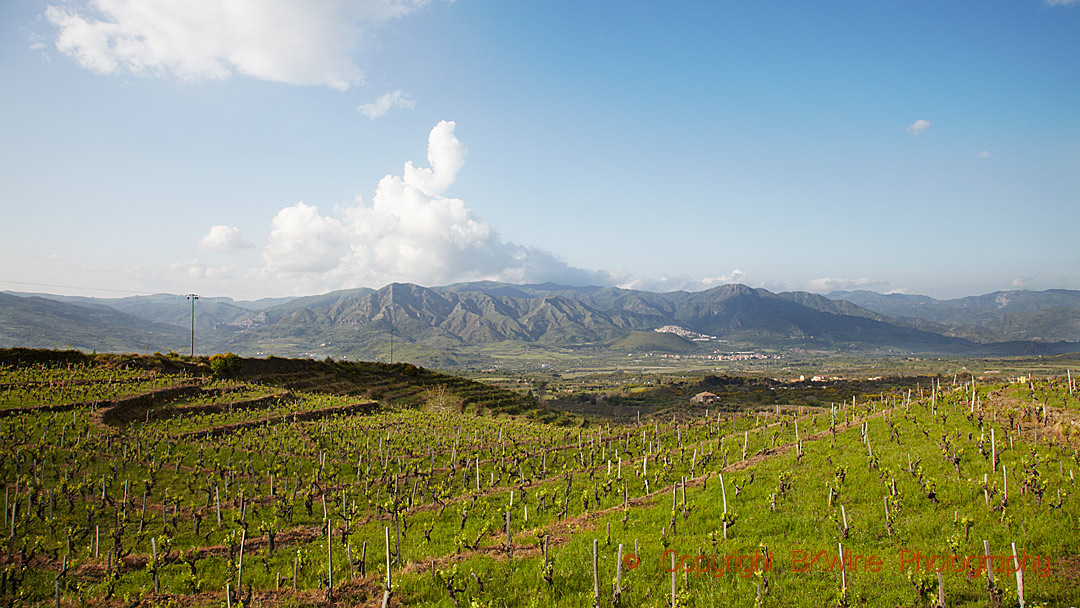
He says that their first vineyard was on the southern slopes of the volcano.
“But three years in a row we had hail so we decided to leave the southern part and invest in the north,” he continues.
Tasca d ‘Almerita is a family that has always had a foot in the future. They are an important part of Sicily’s success in recent years. The Mediterranean’s biggest island has taken great strides up the quality ladder in a short time, thanks in large part to enterprising producers such as Planeta, Tasca d’Almerita and several others.
“Our goal is to make clean and elegant wines, we are almost fanatical. If we were to go to a psychologist, they would probably say that we are suffering from some kind of complex and want to avoid the big, heavy, muscular Sicilian wines of the past,” says Alberto with a smile.
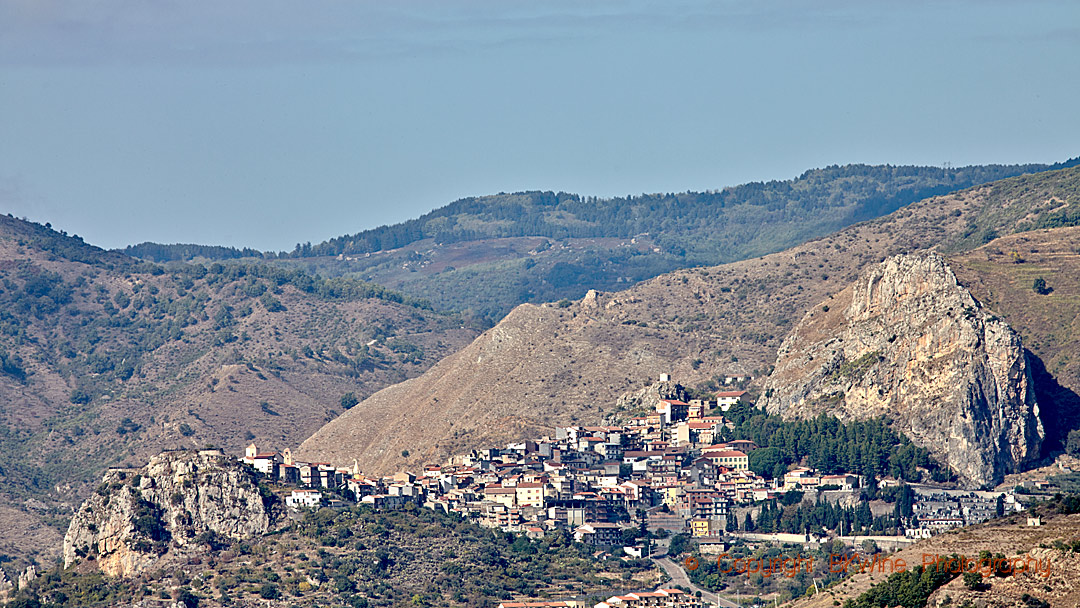
Working on Etna is expensive, difficult and you need to have patience.
“I couldn’t sleep at first. I had nightmares about lava flows that destroyed all of our beautiful terraced vineyards that had taken so long to build with the help of local artisans,” says Alberto.
When you are on the slopes of Etna, you can see the lava flows and you can see how Etna puffs smoke and ashes, then you understand the concerns. Sure, the locals see Etna as a mother and use not the masculine for “vulcano” for Etna; instead, they say la montagna, a feminine concept that protects and instils respect but is not dangerous. But a volcano is a volcano and the anxiety feels justified.
But all thoughts of lava and living volcanoes disappear when you taste Tasca d´Almerita’s four Tenuta Tascante wines from Etna from the vintage 2016. The wines are a successful tribute to elegance and finesse. Like a black Armani dress, where the seams, the type of textile and thread together with excellent craftsmanship is what makes a difference. The wines don’t try to be something they are not. No pumped-up muscles or too much oak. Just elegance in all its seemingly obvious simplicity, which hides the complex work of all the people behind the scenes. Making wine on Etna is not easy. The grape nerello mascalese ripens late, harvest is often at the end of October, with all the risks it entails. All work is done more or less by hand, yes, working on the volcano is not a child’s play. On the contrary.
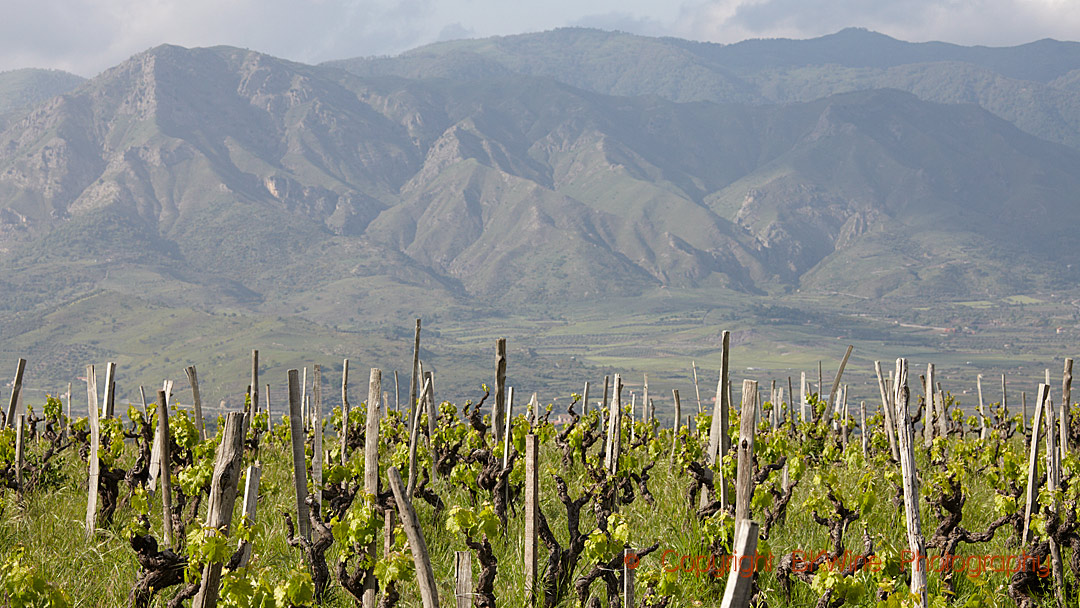
The contrada of Etna
The wines come from three of Etna’s 132 contrada, which can be likened to vineyard locations or sub-regions, and are located on the northern side of the volcano. On Etna, they make wine in a semi-circle that extends south, east and north. The southern part is warmer and has only a few, but good producers (including Benanti who started the Renaissance on Etna in 1988). In total, there are 120 wineries on the volcano. On the eastern side, around the village of Milo, they make mostly white wine from the carricante grape.
It is in the northern part that most producers have their vineyards and this is where most of the volcano’s red wines are made. The western part is wild with chestnut trees and pistachios. In total, Etna has just over 1,000 hectares of vineyards compared to the 40,000 hectares that once existed when Etna was the big source of volume wine to northern Italy and Europe.
But back to Tasca and the wines from Etna, all from the vintage 2016.
Tenuta Tascante Contrada Rampante, Etna Doc, 2016
100% nerello mascalese. Fermentation in steel tank and aged for 12 months in barrels of 25 hl.
Contrada Rampante is located at 740 meters altitude, between the villages of Passopisciaro and Randazzo, and has a volcanic soil created during a period of time that stretches between 4,000 and 15,000 years ago.
Medium-intense, elegant aromas of ripe cherries, ripe lingonberries, white pepper, rose petals. Medium acidity that is in balance with the barely noticeable alcohol, a nicely preserved fruit along with tangible but ripe tannins that are well integrated. Spicy, elegant with a medium body and long finish. Very good.
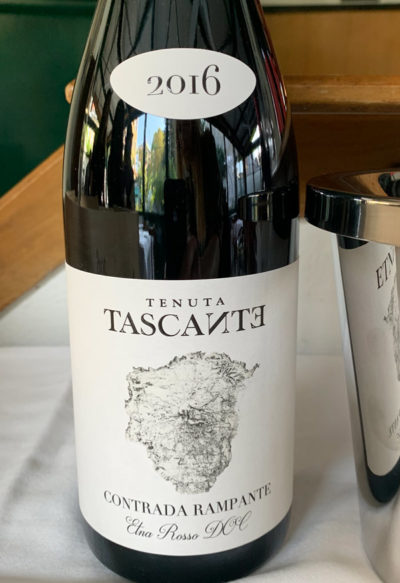
Tenuta Tascante Contrada Pianodario, Etna Doc, 2016
100% nerello mascalese. Fermentation in steel tank and ageing 12 months in barrels of 25 hl.
The Contrada Pianodario is located at 775 m altitude between Montelaguardia and Randazzo and has a volcanic soil created during a period of time that extends between 4,000 and 15,000 years ago. Below these are older soils that are probably older than 40,000 years.
A floral wine with inviting aromas of rose petals, pot-pourri, cherries, tar, cedarwood, raspberries. The wine has a light body, the tannins are silky and well-integrated. The acidity is high but is balanced by the well-preserved fruit. Long elegant finish that invites you to taste again. Light, floral, elegant. A fantastic wine!
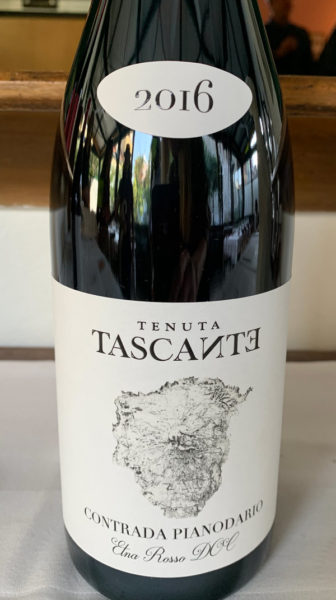
Tenuta Tascante Contrada Sciaranova, Etna doc, 2016
Contrada Sciaranova is located at 730 meters above sea level between Montelaguardia and Passopisciaro and has a volcanic soil created during a period of time that extends between 4,000 and 40,000 years ago.
100% nerello mascalese. Fermentation in steel tank, 70 per cent of the wine is aged for 12 months in barrels of 25 hl while the remaining 30 per cent is in 300-litre barrels of French oak.
Aromas of dark plums, blackberries, ripe raspberries, cedar, leather, spices such as light pepper tones and sweeter spices such as cloves. All components are very elegant, the tannins are tight and stick somewhat to the lower palate, the ripe fruit and light oak barrels notes are also felt in the taste. Long spicy end. Compared to other wines more low-key but still very elegant and well-made.
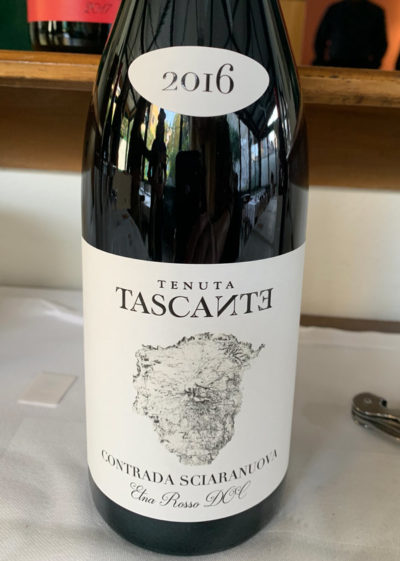
Tenuta Tascante Sciaranova Vechie Vigne, Etna Doc, 2016
Sciaranova has vineyards from 1961. This is made from 100% nerello mascalese and here it is more limestone in the soil covered with rock and volcanic sand.
Ripe fruit notes with plums, blackberries and raspberries, even balsamic tones and hints of coffee beans. A rounder, fuller wine compared to the others, with ripe tannins and medium acidity. Here too a long elegant ending. A riper wine, no spicy edges anywhere, very good.
The wines from Etna are not something for beginners or for those who enjoy full-bodied wines that smell of chocolate and marmalade. These are wines for connoisseurs. Just like a black Armani dress. The Tasca d ‘Almerita Tenuta Tascante wines from Etna are a tribute to Italian elegance at its best.
More about the producer: www.tascadalmerita.it
Åsa Johansson is BKWine’s person in Italy. She lives in Florence since the early ’00s. Asa writes regularly on wine and food in Swedish and Italian publications as well as online.
[box type=”info” style=”rounded” border=”full”]
In addition to its delicious and elegant wines, Etna has breath-taking landscapes and delicious gastronomy. Experience all this on a wine tour to Etna’s vineyards in Sicily with BKWine.
Travel to the wine regions of the world with the wine experts and the wine tour specialist.
Why choose another wine tour?
[/box]




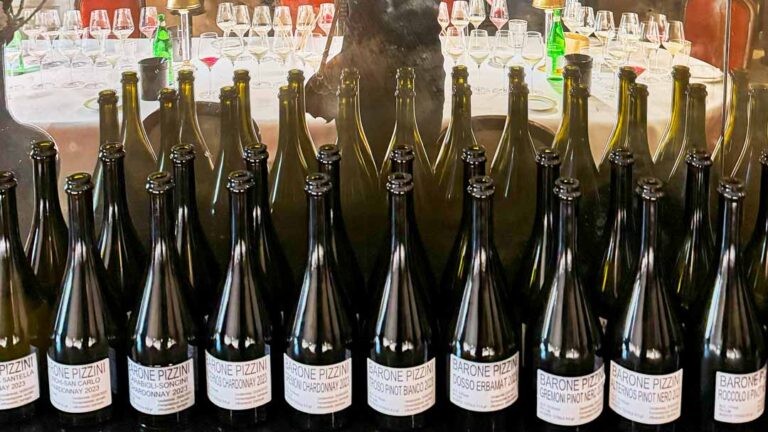






One Response